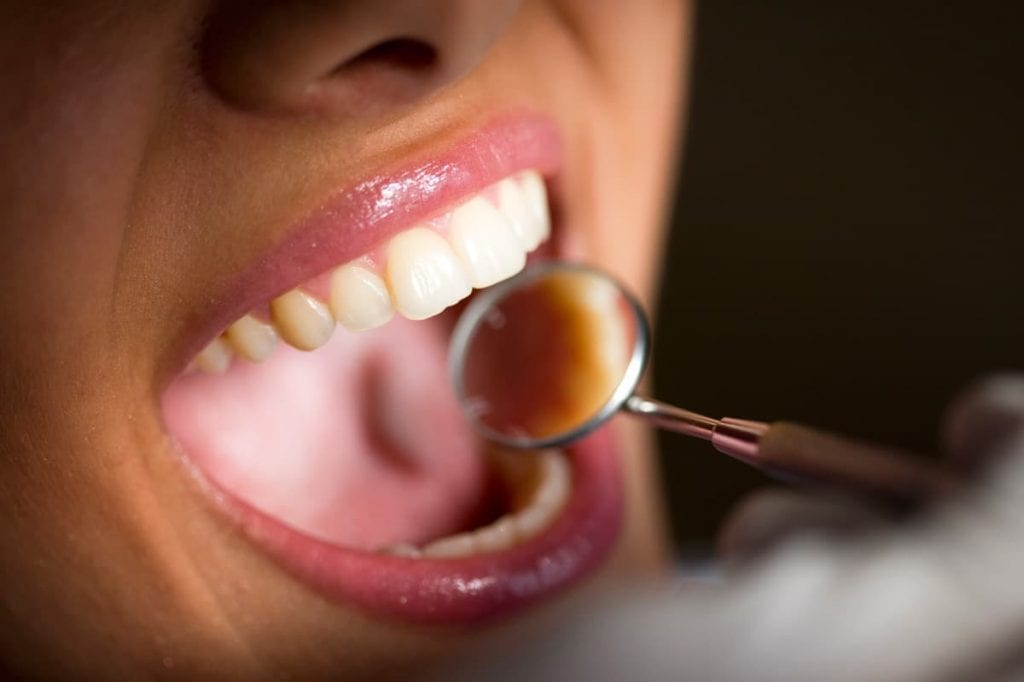Gum disease is one of the two most common diseases that affect our oral cavity. This disease is a condition which affect the gum and bone surrounding the teeth. The disease does not produce obvious signs and symptoms until it has progressed to an advanced stage. In all stages of gum disease, patients usually suffer from bleeding gums as a result of bacteria causing damage to the gums.
In order to understand gum disease, we need to first understand the structures surrounding the tooth. The tooth is divided into the crown and the root. The root is surrounded by bone, which in turn is covered by gums. There is a space between the tooth and gums, called a pocket, which is present both in healthy and diseased states.
Gum disease originates from bacteria that gains entry into the pocket. When bacteria enter the pocket, they attack the gums. This causes injury to the gums, resulting in spontaneous bleeding or upon touching, pain, redness, and sometimes swelling. The bacterial film formed at this stage is called plaque.
If the bacteria is allowed to stay on the tooth surface or in the pocket, they harden to form tartar. If it remains uncleared, the bacteria in plaque / tartar can spread deeper towards the bone to cause the destruction of the bone and the deepening of the pocket.
In the advanced stage of gum disease, the tooth has lost so much bone that it becomes shaky and may drift out of position. In the late stage of gum disease, the tooth can no longer be kept and has to be extracted.
Injured gums, resulting from bacterial infections, bleed easily from the pockets. Through this pocket, bacteria can gain entry into the bloodstream and this can theoretically give rise to effects on other parts of the body and affect general health. It seems ludicrous that a small structure like the gums and teeth can affect the overall body. It is uncommon knowledge that patients with advanced gum disease actually have a large surface area of infection and inflammation. In fact, research has shown that the surface area over which bacteria can enter the bloodstream is equivalent to the total surface area represented by two hands.
Bacteria can either enter the bloodstream directly, or they can send chemicals into the bloodstream. These harmful substances can then be transported to the various organs in the body. For example, harmful chemicals produced by the bacteria can increase the insulin resistance of diabetic patients and worsen the diabetic condition. It is also well established by the World Health Organization (WHO) that diabetes can lead to the worsening of gum disease.
Since gum disease is usually silent and does not trouble patients until the disease has progressed to an advanced stage, it is easy for patients to ignore their presence. Also, Singaporeans may be more aware of decay and its prevention. However, the statistics is showing a shift in the number of patients suffering from gum disease.
According to studies, close to 80% of Singaporean adults examined were found to have tartar. Based on the adult oral health survey by the Ministry of Health, 89% of Singaporean adults reportedly brush their teeth twice a day but only 33% reported the practice of flossing.
Following the general trend seen in Singapore children, the national survey revealed a shift in the oral disease profile among the adults. The findings suggested a decrease in the prevalence of tooth decay but an increase in the prevalence of gum disease. It was found that about 85% of the adults examined displayed signs of mild to moderately severe forms of gum disease. Hence, it is worthwhile to note that while Singaporeans have reportedly lower decay prevalence, the prevalence of gum disease seemed to be significantly higher.
If this trend is to continue, more patients will suffer from gum disease and subsequently the negative effects of gum disease on general health. As the population becomes more health conscious, it is imperative to increase the awareness of the silent effects of gum disease on our
general health.
Author: Dr. Ang Chee Wan
